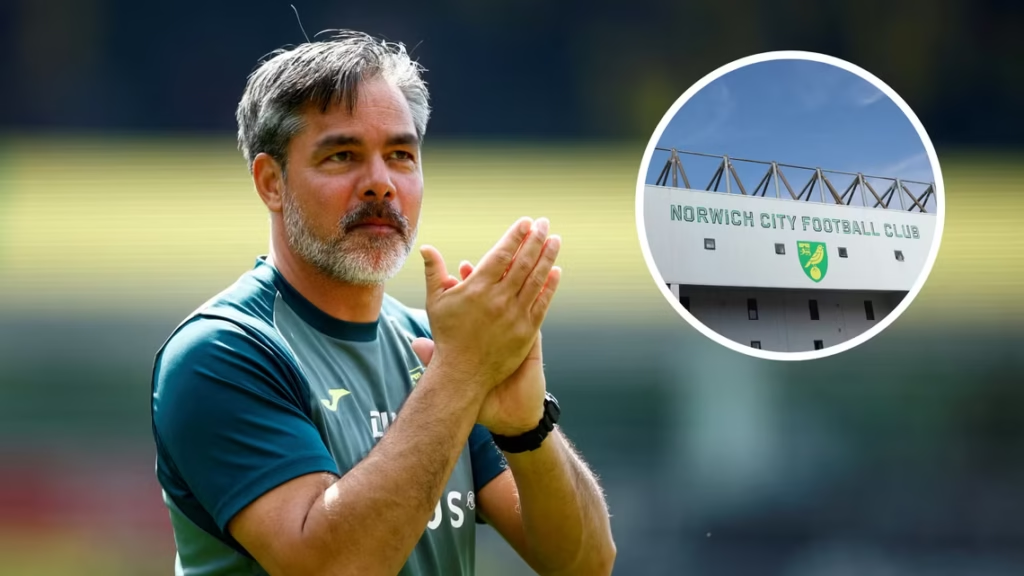
Ben Knapper, the sporting director, made a mistake with Sydney Van Hooijdonk’s Norwich City career, which he will have to avoid if the team decides to go on loan in January.
With the option to extend the contract in the summer, the Dutchman joined the team late in January of the 23–24 season. Although a move for the young, athletic attacker was viewed as a wise move, David Wagner only gave him 135 minutes to establish himself, and he was unable to take a chance during that brief period.
The Norwich leaders are probably keeping an eye on players they might bring in to temporarily strengthen the team as January draws near. Ben Knapper must improve in less than a month since January loans at Carrow Road don’t tend to work out very often.
Sydney van Hooijdonk was unable to bolster the team.
There is frequently a hopeful expectation associated with loan players. They frequently serve to cover up any remaining problems while a permanent solution is being found, and January acquisitions in particular have even less time to adjust and contribute to any one club.
The Canaries lacked attacking options when van Hooijdonk joined the team. Adam Idah left for Celtic, Hwang Ui-Jo’s loan was terminated, Josh Sargent, their main goal scorer, had just recovered from injury, and Ashley Barnes was their only other attacking option.
Van Hooijdonk appeared to be a striker constructed to order for the Championship. His physical presence was instantly apparent, and given that he had only played a few games for Bologna following a comparatively successful loan season at SC Heerenveen in the Eredivisie, where he scored 19 goals in 39 games during the 22–23 season, there must have been a strong desire to succeed.
Van Hooijdonk, however, was unable to contribute much to the Norwich team vying for a play-off position, save for one assist. Wagner never started him, thus he was frequently playing catch-up with the rest of the team, though it’s arguable to what extent that is his responsibility.
In hindsight, the signing was somewhat puzzling. It’s difficult to understand why he was brought in, and it felt like a bizarre waste of skill, even though Bologna didn’t achieve the development they might have hoped for. Yes, a fresh striker was needed for squad depth.
When he returned to the club, the Italian team let their guy go for free.
Norwich needs to learn its lessons this January.
In January, Johannes Hoff Thorup’s squad desperately needs to be strengthened. However, the loan market might be the best way to keep things moving forward given that majority stakeholder Mark Attanasio acknowledged that it is more difficult to bring in permanent players during the January transfer window.
Kaide Gordon, a loanee, has only played 172 games this season, which may not be as many as he or his parent club Liverpool would have liked. In contrast to his explosive start, Thorup stated that Callum Doyle, who is on loan from Manchester City, may have been overworked in recent games due to “too many minutes” and a minor injury.
If Norwich decides to sign a loan player in January, they will need to strike a balance. The story of van Hooijdonk demonstrates that it is never a wise use of time or skill to bring in a loan in order to fill a need, particularly when the player’s parent club doesn’t seem to want to give them adequate playing time. To catch up, the team can turn to a younger player who has already seen a lot of action this season.
Once more, that striking option will be the most likely to be filled, particularly in light of recent rumours that Sheffield United is considering a bid for Ashley Barnes. Given that free agent transfer Emi Marcondes appears to have played for Norwich for years, sporting director Ben Knapper will need to think about who could have an instant influence on the team this time.
The route of experience shouldn’t be disregarded, even when it’s possible that an academy prospect at a major club is already being considered and supporters are constantly thrilled by the high-potential kids at Carrow Road. Adding a player who can support Norwich’s many young players who are still developing should be a top priority, as should being able to contribute on the pitch.







